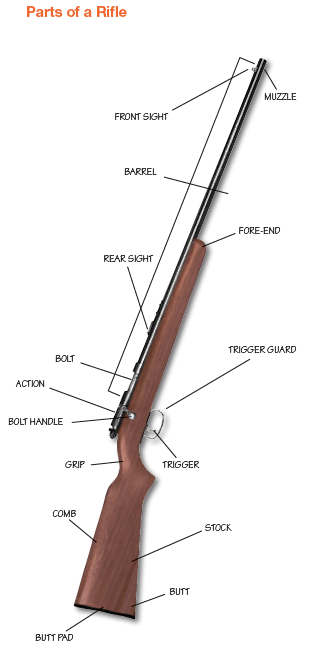
Rifles use different calibers of ammunition and the projectile fired through them is always a single piece bullet. Rifles are generally used for long-range combat, sniping, and long distance shooting applications like hunting. Rifling provides stability to the bullet and offers long range precision. A rifle has a long barrel, which is spirally grooved on the inside by a process called rifling. RifleĪ rifle is a type of firearm primarily designed for precision. Each of these types is effective in certain situations, but not every situation. Additionally, the purpose of each of these classifications is different. The classification can be made based upon a firearm’s size, length, barrel design, and the type of ammunition being used. Types of FirearmsĪll handheld firearms can be classified into three basic types. Rifles shooting heavy calibers have thicker barrels to compensate for the round’s power. Similarly, the material of the barrel also affects performance. The length of the barrel affects the accuracy of the rifle. The far end of the barrel where the bullet leaves it is known as the muzzle. Barrels have internally machined spiral grooves which give the bullet a spinning motion when it is fired, thus stabilizing it (this machining is called rifling and is the basic difference between a shotgun and a rifle). It helps the bullet to propel out of the rifle properly. The barrel is a kind of hollow metal rod, attached to the action. Some stocks also allow you to store stuff like batteries, and small medical packs. Some stocks have a foldable design, while some feature a minimalist design. Stocks come in a wide variety of designs, and each of them has their own advantages. However, with advancements in technology, some people prefer to use synthetic or polymer-based stocks. Stocks were originally made from wood (many still are). The stock is the rear part of a rifle, which helps the shooter to attain stability, aim properly, and counter the recoil when a shot is fired. Its function is to load the cartridge, hit it with the hammer, and eject the burnt shell out. The action is comprised of the bolt, hammer, and trigger assembly and generally lies midway on the rifle. It is the part where the functions of loading, firing, and ejection are performed. The action is to the rifle what an engine is to a car.

Each part has its own function and importance when it comes to the overall performance.

Just like any other modular machine on the planet, a rifle is also a combination of several parts working together in cohesion.Ī rifle is basically comprised of three parts. If you are new to the world of firearms, you must read this before getting involved with one. In this article, we’ll describe the basic parts of a rifle and briefly discuss the function of each part. Handling a rifle is serious business, as improper or careless handling can cause dangerous or even fatal consequences. The willingness to learn what the correct terms are can make talking about your new hobby much easier.īefore you can use, or for that matter, even touch, a rifle, you need to learn about the parts and mechanisms of a rifle. For a new gun owner, identifying the parts of a rifle correctly can make speaking about firearms tough.


 0 kommentar(er)
0 kommentar(er)
